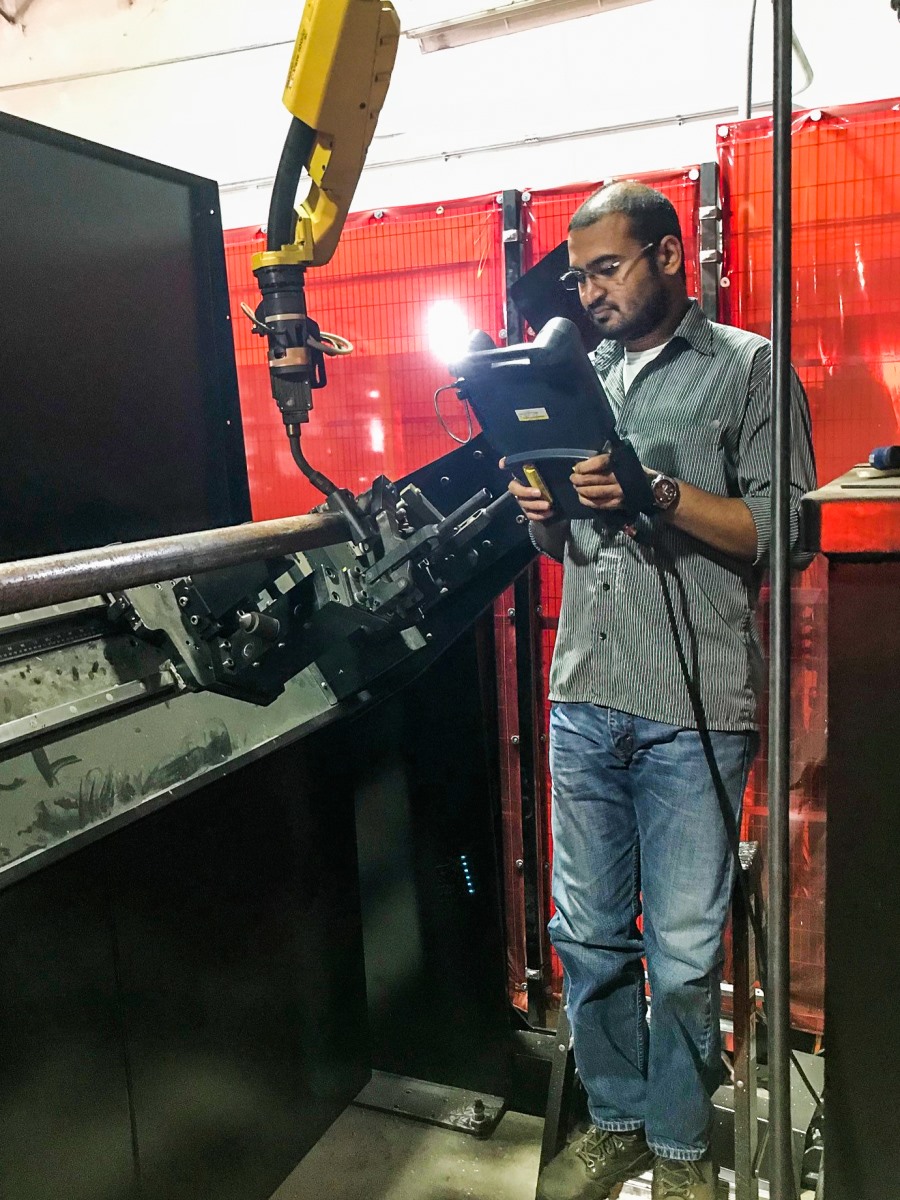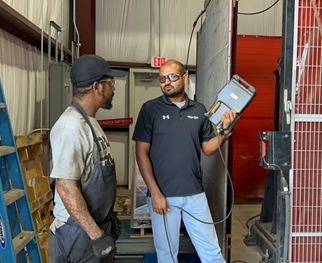Engineering Lift-Off: How Santhosh Kumar Loganathan Brings Aerospace Science to Trailers
When Santhosh “Sam” Kumar Loganathan left his job working for a company building drones for a gig engineering trailers, he thought it would be a short-term solution. He didn’t get his master's in aerospace engineering thinking he’d end up in trailers after all, he says with a laugh.
But since 2017, he’s done just that. Loganathan is the Engineering Director for Triple Crown Trailers, Down to Earth Trailers, and Black Iron Products. He says he hasn’t met anyone else with his background in the industry. It’s a challenge blazing the trail and bringing aerospace ideas to a new field, but Loganathan says the challenge is part of the draw. 
“One of the core challenges is that everybody makes trailers, but we want our trailers to be different. I just took the challenge and started falling in love with this job,” Loganathan said. “I’ve gotten multiple job offers in the aerospace field, but my heart never let me change from this. In aerospace, I can only do aerospace. In the trailer industry, I can bring the principle of aerospace and implement it here. That's quite a challenge for me, and I love the challenge. Every trailer is a challenge.”
Over his almost 9 years at Triple Crown, he’s introduced new techniques and designs. He says it took some convincing, but he’s fortunate enough to work somewhere that was ready to take off into unknown territory.
“We designed everything from the ground up. That’s where I use my core strengths. In aerospace, everything is about weight saving,” Loganathan said. “Anything that you do, the first concept is you have to save weight. And then the second thing is aerodynamics — make sure it does not affect the airflow.”
Loganathan says a large part of his job is about finding the right material. He’s testing materials and continuously doing analysis to ensure the frames are as light as possible without sacrificing durability and strength.
“Everybody thinks that with a trailer the more steel they use, the more iron you see, the stronger a trailer is. That’s not necessarily true,” Loganathan said. “It has to withstand the payload and get the job done, but how can you limit the weight of the weight frame, so that the customer can load more?”
Loganathan holds himself to a high standard in general, but especially when it comes to safety. Customers are going to overload trailers, Loganathan says, but he believes in meeting them where they’re at and working to make their products as safe as possible out in the real world.
“In a perfect world, we tell the customer what they can load and they follow that. But I can’t blame them either. If they go to a site, dig up concrete, and they load it into a dump trailer. They don’t have a portable weigh scale. They just fill it,” Loganathan said. “Everybody’s going to overload, so we design with a higher safety factor.”
Loganathan has carried the term over from aerospace engineering. If an airplane is designed to carry 100 people, but the frame can handle 200 people, that’s a safety factor of two – twice the strength, Loganathan explains.
“We always go for higher safety factor,” Loganathan said. “The goal is for the frame to not break, even if it’s overweight, so our customers are never stranded.”
Loganathan designs with safety, quality, and ethical manufacturing at the forefront. By embedding engineering science into daily production and sharing what works across sites, he’s working toward an even brighter future in manufacturing.
“We want our products to be safe anywhere in America. That’s bigger than one plant,” Loganathan said.
Beyond his work on the factory floor, he is also an advocate for knowledge sharing. Whether it’s speaking with peers about robotic weld prep, collaborating on standardized work instructions, or mentoring early career engineers, Loganathan sees collective improvement as a competitive advantage, not a trade secret. 
It is this philosophy that drove Loganathan to become involved with the National Association of Trailer Manufacturers (NATM) Technical Committee. Loganathan comes to the Committee ready to share and doesn’t shy away from new ideas, says NATM Technical Director Scott Crimmins.
“It’s not easy to change career fields or build an education program from the ground up, and he’s done both,” Crimmins said.
Another part of being innovative for Loganathan is engaging the next generation of engineers. He mentors high school students in Computer-Aided Design (CAD) and leads the Design-to-Arc: Trailer Safety & Welding Robotics Lab, a 12-week hands-on program that teaches safety-first design, welding robotics, and principles adopted from NATM's Compliance Verification Program.
By blending classroom concepts with shop-floor experience, he equips students with industry-ready skills and a clear understanding of how design, safety, and manufacturing intersect.
“Engineering isn’t just about machines — it’s about people,” Loganathan said. “If we can inspire students early, we’re building the next generation of innovators who will solve tomorrow’s problems.”
